Garden paths laid out by multicolored paving slabs are an attribute of the countryside of the country cottage. The advantages of paving slabs - in its aesthetic attractiveness and maintainability: the folded element can be easily replaced. But the cost of finished concrete products is high. In this regard, information on how the paving slabs can be made with their own hands will be useful to many.
Content
- Overview of the manufacture of paving slabs
- Tools and fixtures for the manufacture of paving slabs
- How to make a shape for paving slabs with your own hands
- Making vibrationtol for paving slabs
- Cooking mortar for paving slabs
- Some sidewalk cutting rules
- Patent instructions for the manufacture of paving slabs
Overview of the manufacture of paving slabs
Tile for garden tracks can be made by any of two ways:
- vibrating;
- vibropressing.
Vibropressing at home is complicated by the need for drying finished products (after they are processing using vibropress) in the drying chamber, in conditions of high temperature and humidity.
For vibration, it is necessary to have at its disposal vibrationtole and molds. All this can be purchased or making yourself. The whole process can be divided into several stages.
- Production of forms for vibration and their preparation.
- Preparation of a mixture of concrete.
- Tile molding.
- Vibropressovka.
- Drying products.
- Reform to the finished tile.
Important: For garden tracks, the thickness of the tile can be 40 mm, and for the roadway (entrance to the garage, on the car park) - at least 60 mm.
Tools and fixtures for the manufacture of paving slabs
The tools for sidewalks will be needed as follows:
- concrete mixer or mixer with a mixture mixing capacity;
- vibrotol;
- trowel - to fill the forms of the solution;
- bucket;
- level.
In addition, it is necessary to have at its disposal form for paving slabs. Finished forms can be made of silicone, plastic or polyurethane. From plastic - the most wear-resistant, withstand up to 800 cycles of application.
For drying not yet frozen solution, racks will be required. Calculation tiles should occur under the following conditions.
- Shelves racks should be smooth and strictly horizontal.
- Drying should be carried out in the shade: under the right sunlight, the tile can crack.
- The rack should be protected from rain.
Important: The drying process should occur at a temperature not lower than + 10 ° C.
How to make a shape for paving slabs with your own hands
For the manufacture of a form, you can use a metal sheet Il or wooden rails. Plywood, boards are also suitable.
To get a shape of wooden bars, you must perform the following.
- Select a form configuration: it can be square, rectangular, as a hexagon.
- Make parts taking into account their castle connections in the corners. The height of each part must be equal to the tile thickness.
- Treat the grinding machine inner sides of the formwork.
- Connect the details in the corners.
Metal formwork is made with a grinder and welding in the next sequence of actions.
- Formwork parts cut from sheet steel. The wall thickness should be at least 2 mm.
- Details are connected by welding only from the outside of the corners. Handles are welded for the convenience of the platform.
- The form is painted.
Important: Assembling formwork (forms) It is necessary to perform on a flat surface so that the lower and upper edges of the product lie in the same plane.
Alternative can be disposable plastic box storage boxes. The service life is not large, but for the manufacture of a small batch of tiles is enough.
Also, the form can be made of plaster, forming the pattern in the center. For this, dry gypsum should be mixed with water to pasty consistency. The finished mixture is laying out in the box of suitable sizes and form the tile of the protrusion of the square of the square plate or flower pot.
Making vibrationtol for paving slabs
Vibrotol or machine for paving slabs of factory manufacture is expensive. It can be made it yourself.
Materials, the following are needed for work:
- 40 × 40 × 4 mm steel corner - for tabletop stiffery framework;
- sheet steel thickness of at least 5 mm - for table top;
- the pipes are profiled with a cross section of 40 × 40 mm or a circular diameter of 2/3 inches - for legs and cross;
- springs amortization motorcycle;
- engine electrical single-phase power on up to 1.0 kW;
- washers, engravers, bolts - for mounting the engine.
The amount of materials is selected depending on the size of the table top and the height of the vibrostol itself.
Stages of work:
- From the corner, parts for the frame are cut and combined with welding.
- By the size of the frame cut out the worktop and fasten it to the frame.
- From the pipes weld in the form of a table without a cover. In the corners, plates are attached for springs.
- On top of the plates in the corners weld the springs and fasten them as well as to the tabletop, which is installed on top.
- The electric motor is fixed to the bottom of the table top. The design of the attachment should not go to the working surface of the vibrostol.
- An eccentric is installed on the motor shaft - a metal plate with a shifted center of gravity or screw. The length and mass of the eccentric is determined experimentally, selecting the required frequency of the vibration of the countertop.
During operation, the table should stand on a smooth, durable basis. In order to achieve its immobility, the legs are screwed with anchor screws.
Cooking mortar for paving slabs
The properties of paving slabs are largely dependent on the quality of the solution. Its components are:
- cement brand M500 or M400;
- sand;
- gROTSEV;
- water.
In addition, a plasticizer is added to the solution (it helps to increase the viscosity of the solution and moisture resistance of the tile) and fibrovolok (makes the material more durable, reinforced).
Important: Cement must be fresh, and sand - without impurities. As a plasticizer, Master Silk grades are used, "Superplastic C-3", Plastimix F. Fibrovolockedly use MICRONIX BAZALT 12 mm and Micronix 12 mm brands.
Components are mixed in the proportions specified in the table.
Some sidewalk cutting rules
Paving tile for giving can be posted as a mosaic geometric pattern. Tile color can be any. Staining is performed using artificial colors and natural pigments.
Apply two staining methods:
- on the surface of the finished tile;
- "In the mass".
The first way is more economical: dyes need less. The disadvantage - over time, during the abrasion of the surface, the color of the tile is lost. The second method requires a consumption of more pigment, but gives the best result. To save the tile in the forms poured into two stages: first - with a melted solution, and then - colorless. The time difference between the fill stages should not exceed 20 minutes.
Patent instructions for the manufacture of paving slabs
The order of kneading the solution
The solution is mixed in the proportion specified in the table (see above) using concrete mixer.
- In the sand add dye (up to 7% of the volume) and plasticizer. The composition is stirred about half a minute.
- Cement and rubble is added to the mixture, kneading lasts 1 min.
- In the process, water is added in small portions until the solution acquires a sour cream-shaped consistency.
- Fiber-fiber and kneading continues up to 1 min.
Pour tile
After the solution in the desired quantity is noticed, the work is performed in the following order.
- Lubricate the shapes with waste machine oil or soap solution. This is necessary so that the cement does not stick to the walls of the form and the finished tile could be easily removed.
- On the vibrotol form filled with a solution.
- The electric motor is included in the network. Vibration lasts about 5 minutes. As long as the white-colored foam is not formed on the surface of the solution.
- Forms with a solution after vibration are laid on the shelves of racks for drying for up to three days.
Tip: In order to get a decorative tile, on the bottom of the form you can put a river pebbles, shells or multi-colored fragments of porcelain. After that, the shapes are filled with cement-sandy solution.
Stripping
If after pouring the solution, the tile cannot be easily removed, the form should be lowered into warm water for several minutes. Plastic will expand and the platform can be finished, knocking on it with rubber xy.
The removed tile must recruit the strength on racks for 28 days. Sign of readiness - ringing when tapping one tile about another. The finished tile is placed in rows of pallets and is covered with film.
Forms should be cleaned from a solution with a salt solution and clean water, after which - dry.
In conclusion, it is clearly about how the pavement tile is made with their own hands (video with explanations of a specialist).

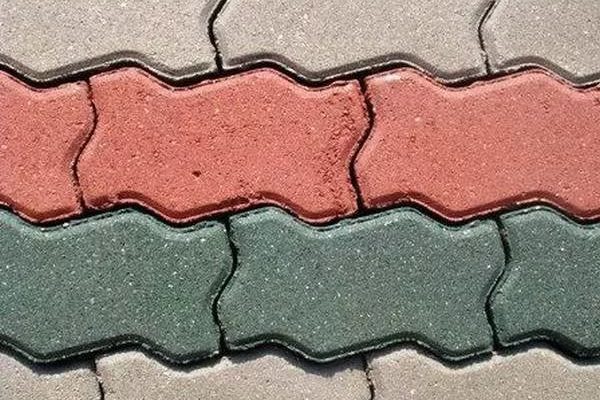
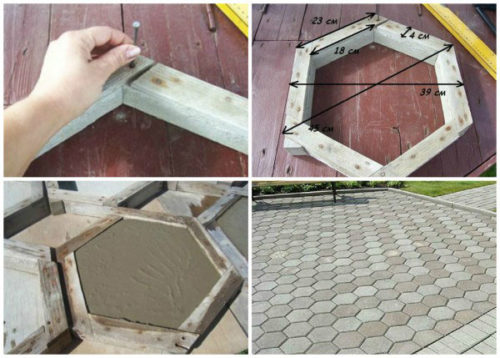
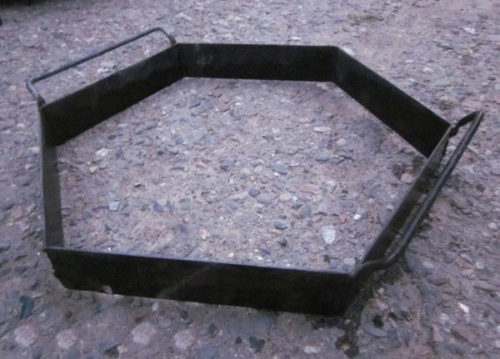
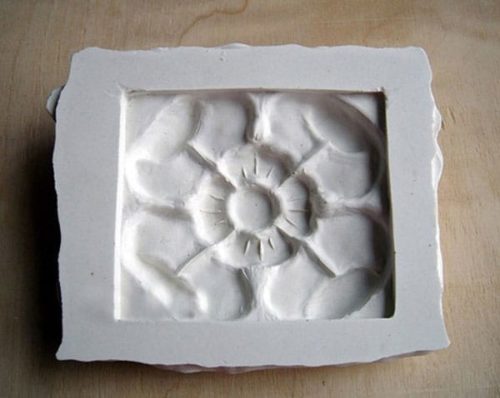
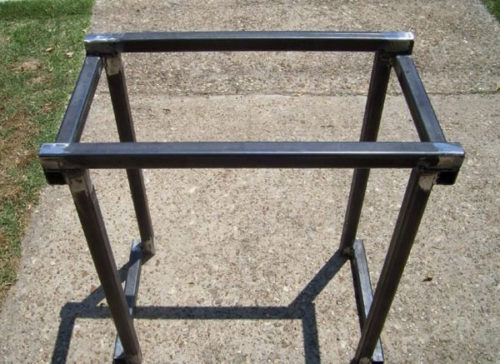
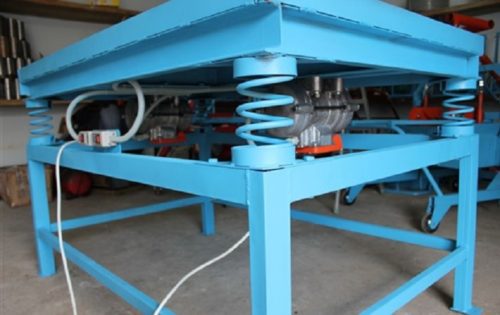

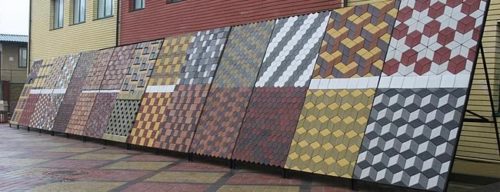

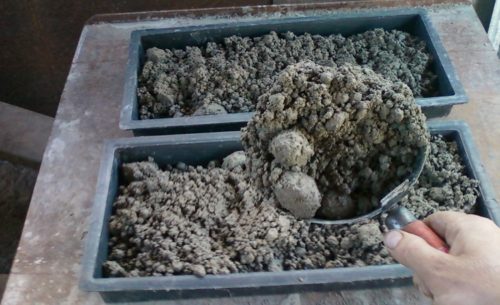



















Honestly, it is easier for me to buy tiles, but I need to lay it yourself as I do it for myself. The most important thing is good to prepare the basis and think over the overall picture. For my drawing, the pavement tile-61 was just right.
Honestly, it is easier for me to buy tiles, but I need to lay it yourself as I do it for myself. The most important thing is good to prepare the basis and think over the overall picture. For my drawing, the pavement tile-61 was just right.